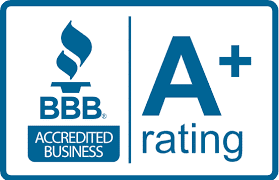The average roof replacement cost typically ranges from $5,000 to $15,000, depending on materials, labor, and home size. Factors like roof pitch, location, and necessary repairs can also impact the final price. Selecting quality materials and a reliable contractor influences upfront costs and long-term durability. Factoring in these considerations ensures better financial planning and prevents unexpected expenses.
Factors Influencing the Average Roof Replacement Cost
Knowing the key elements affecting roof replacement costs helps homeowners budget effectively and choose the best home options. Each factor contributes differently to the overall expense, and understanding these details allows for informed decisions. This clarity can also prevent surprises during the replacement process.
Type of Roofing Material
Material choice greatly influences the cost of replacing a roof. Options like asphalt shingles, metal, tile, and slate vary in price depending on their durability, lifespan, and design features. Choosing the right material depends on your budget, the local climate, and the style you want for your home.
Roof Size and Slope
The size and slope of the roof are significant cost considerations. Larger roofs require more materials, while steep slopes demand specialized labor and equipment, increasing expenses. Contractors factor these aspects into their estimates to provide accurate pricing.
Labor Costs and Regional Variations
Labor costs vary depending on location and the complexity of the roof replacement. Urban areas often have higher rates due to increased demand, while rural areas may have more competitive pricing. Complex roof designs also require additional expertise, raising the cost.
Roof Decking and Structural Repairs
Damaged roof decking or structural issues can increase replacement costs. Repairs are often necessary to ensure the new roof is installed on a stable and safe foundation. Although these repairs may add to the expense, they are critical for the roof’s longevity.
Removal of Old Roofing
Removing old roofing material is another factor that contributes to the cost. Heavier materials like tile or slate require additional labor, which increases disposal expenses. Contractors often include this service in their quotes, covering removal and proper waste management.
Permits and Inspections
In many locations, obtaining permits and passing inspections are required for roof replacement projects. Permit fees vary by region and must be accounted for when calculating the total expense. These steps ensure compliance with local building codes and regulations, avoiding delays.
Typical Price Range for the Average Roof Replacement Cost
Knowing the typical price range for roof replacement helps homeowners plan their budget and make informed decisions. Different materials and roofing styles have varying costs and offer unique advantages. By exploring these common price ranges, homeowners can choose a solution that balances affordability and quality:
Asphalt Shingles
Replacing a roof with asphalt shingles typically ranges between $5,000 and $12,000. Asphalt shingles are widely used due to their affordability, ease of installation, and availability in various colors and styles. They offer reliable protection and can last 20 to 30 years with proper maintenance.
Metal Roofing
Metal roofing costs generally fall between $8,000 and $25,000, depending on the type of metal and roof size. This option is known for its durability, energy efficiency, and long lifespan, making it a popular choice despite the higher upfront expense. Its resistance to harsh weather conditions and low maintenance needs add to its appeal.
Tile Roofing
Tile roofing replacement costs typically range from $15,000 to $35,000. Clay and concrete tiles are highly durable and provide a distinct aesthetic that enhances curb appeal. The added weight of tiles often requires reinforced roof structures, which increases the overall cost.
Slate Roofing
Replacing a roof with slate can cost between $20,000 and $50,000, depending on the roof size and quality of the slate. This premium material offers unmatched durability, with some slate roofs lasting over a century. Its high price reflects the craftsmanship and expertise required for installation.
Wood Shakes
Wood shakes typically cost between $10,000 and $20,000 for roof replacement. This natural material offers a unique, rustic appearance but requires regular maintenance to prevent moisture damage and rot. While wood shakes can enhance a home’s charm, they are less durable compared to metal or tile options.
Additional Considerations in the Average Roof Replacement Costs
Beyond the basic expenses of materials and labor, homeowners should prepare for additional costs that can arise during roof replacement. These extra costs often depend on the project’s specific circumstances and can significantly impact the overall budget. Familiarity with these potential expenses ensures better financial planning and prevents surprises:
Roof Decking Repairs
If damage is discovered during the roof replacement, the decking may need repairs or replacement. Issues like rot, water damage, or structural weaknesses must be addressed to ensure the new roof has a stable foundation. Depending on the extent of the damage, the cost of repairing or replacing the decking can be several hundred to several thousand dollars. Ignoring these issues can compromise the longevity and performance of the new roof. Contractors often inspect the decking thoroughly before starting the installation.
Removal of Old Roofing
Removing old roofing materials is necessary to add to the overall replacement cost. Heavier materials, like tile or slate, require additional labor and removal time, increasing expenses. Disposal fees may also be included, as contractors need to transport and properly discard the debris. Some contractors incorporate this cost into their quotes, while others list it separately. Homeowners should confirm whether removal is included when reviewing estimates.
Structural Reinforcements
Certain roofing materials, like tile or slate, are significantly heavier than others, requiring structural reinforcements. Adding support to the roof’s framework ensures it can handle the added weight without compromising safety. These reinforcements involve additional materials and labor, increasing the total project cost. Ignoring this step can lead to safety hazards and premature structural damage. Proper reinforcements enhance the roof’s overall durability and performance.
Permits and Inspections
Local building codes often require permits and inspections for roof replacement projects, adding to the total expense. Permit fees vary by region and project scope, ranging from a few hundred to several thousand dollars. Inspections ensure the work complies with local regulations and meets safety standards. Contractors usually assist homeowners in obtaining permits and scheduling inspections. Accounting for these costs ensures the project proceeds smoothly without legal or regulatory issues.
Chimney Flashing and Skylight Repairs
Chimney flashing or skylight repairs are additional costs that may arise during roof replacement. Damaged flashing or improperly sealed skylights can lead to leaks if not addressed during installation. Repairing or replacing these components adds to the overall cost but is essential for preventing future water damage. The expense depends on the extent of the repairs needed and the materials required. Investing in these repairs ensures a seamless and watertight roof.
How to Save on Roof Replacement Costs
Roof replacement is a significant investment, but there are effective ways to reduce expenses without compromising quality. Strategic planning and careful decision-making can help homeowners save money throughout the process. Exploring these tips ensures a balance between cost-efficiency and long-lasting results:
Compare Multiple Contractor Quotes
Requesting quotes from several roofing contractors provides a clearer picture of competitive pricing. Detailed estimates help homeowners identify the best value while ensuring the scope of work meets their needs. Reviewing and comparing these quotes allows homeowners to avoid overpriced services and unexpected charges. It’s also an opportunity to gauge the contractor’s experience and expertise.
Choose Materials That Fit Your Budget
Selecting roofing materials that offer durability and affordability is a key way to manage costs. Options like asphalt shingles are cost-effective and widely available, making them a popular choice for budget-conscious homeowners. While premium materials like slate or tile offer longer lifespans, they come with significantly higher upfront costs. Balancing material quality with budget considerations ensures both savings and reliability.
Schedule Replacement During Off-Peak Seasons
Roofing services are often in higher demand during certain seasons, which can increase labor costs. Scheduling roof replacement during off-peak times, such as late fall or winter, usually results in lower contractor rates. Contractors may also have more availability, allowing the project to proceed smoothly without delays. Homeowners can save money by taking advantage of seasonal pricing trends.
Invest in Preventative Maintenance
Regular maintenance helps identify minor roofing issues before they escalate into major problems. Addressing these issues earlier reduces the likelihood of costly repairs or premature roof replacement. Contractors offering maintenance services can help extend the roof’s lifespan, saving money over time. Keeping the roof in good condition minimizes the risk of unexpected expenses.
Consider Partial Roof Replacement
In cases where damage is limited to a specific area, partial roof replacement can be a cost-effective solution. Replacing only the affected section eliminates the need for a complete roof replacement, reducing overall expenses. Contractors can assess whether a partial replacement is feasible based on the roof’s condition and age. This approach addresses immediate concerns while extending the life of the remaining roof.
Making Smart Choices About Roof Replacement Cost
Planning for a roof replacement requires thoroughly understanding all the factors influencing its cost. Material selection, labor expenses, and additional considerations like structural reinforcements or permits can significantly impact the budget. Exploring ways to save on roof replacement costs, such as comparing quotes, choosing budget-friendly materials, and scheduling during off-peak seasons, can make the process more manageable. By staying informed and working with reliable roofing services, homeowners can ensure their investment provides long-term protection, value, and peace of mind.
Visit our Faircloth Roofing Inc. blog for expert insights, roof replacement, and maintenance tips.






